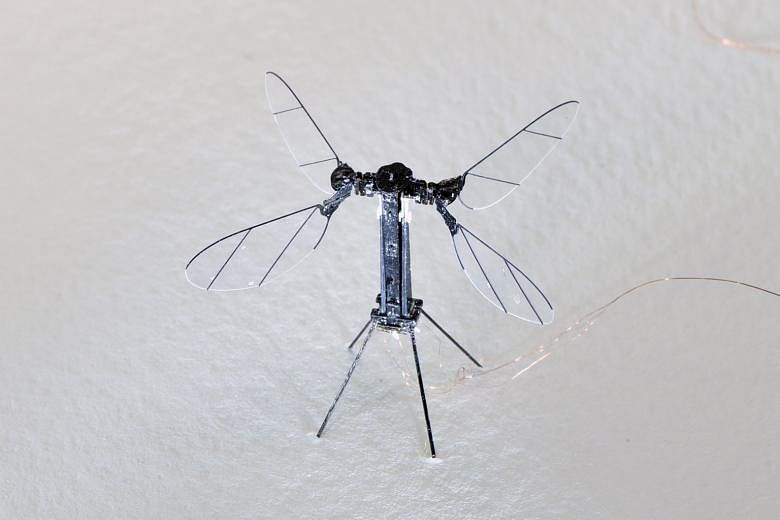For years now, scientists have sought to build aerial robots inspired by bees and other flying insects. But they have always run into a fundamental problem: Flying takes a lot of energy.
Insects flap their wings, generating the thrust needed to move through the air, by utilising the energy stored in strong muscles. Their robot doppelgangers must rely on batteries, which are less efficient and tend to be heavy, or must be hooked up externally.
Now researchers at Harvard University have built a new type of robot that is capable of true, untethered flight. The unit, called the RoboBee X-Wing, is equipped with four tiny wings made of carbon fibre and polyester, and even tinier photovoltaic cells.
In bright light, its solar cells generate about five volts of electricity, which a minuscule transformer then boosts to the 200 volts necessary for lift-off. When the high voltage is applied to two components called piezoelectric actuators, they bend and contract, much as an insect's muscles would. This drives the flapping motion of the RoboBee's wings.
Clever engineering keeps the device small and light - about one-quarter the weight of a paper clip.
This allows the RoboBee to flit about freely, whereas previous iterations of the robot could take off, land or perch mid-flight only while leashed to a power supply.
"We wanted to keep pushing the limit on how much power we could squeeze out of the artificial muscles in the robot, and how efficient we could make the whole system," said Dr Noah Jafferis, a postdoctoral engineer at Harvard and one of the leaders of the research.
Dr Jafferis and his colleagues reported in Nature that the RoboBee is now able to match the thrust efficiency of similarly sized insects, such as bees.
The first time the robot took off in the lab, it lifted off with such force and speed that some of the researchers yelped in surprise. "We weren't expecting it to take off like that at all," said Dr Farrell Helbling, a postdoctoral roboticist who also led research on the seminal flight.
So far, each of the RoboBee's test flights have lasted only a couple seconds. One of the robot's shortcomings is that it still cannot store energy. As soon as it flies out of a small, well-lit area, it slows down and falls to the ground.
But Dr Helbling and Dr Jafferis are confident that the robot could stay aloft for several minutes if its solar cells and circuits were given the proper tweaks.
Further advances in engineering could make microrobots even more autonomous, said Dr F. Zeynep Temel, who works on ant-sized jumping robots at Carnegie Mellon University. And once these tiny robots are able to zip up, down and sideways outdoors, they could be used to take air quality measurements or even be deployed in swarms.
"Having onboard power is the first big step to getting microrobots out of the lab and into the real world," Dr Temel said.
NYTIMES

